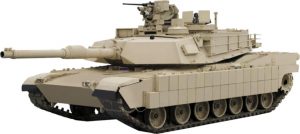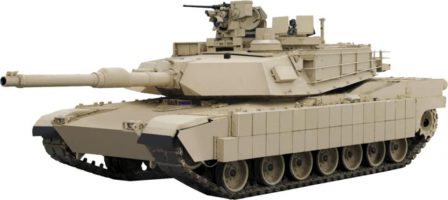
There’s an interesting article over on the Forbes website about U.S. tanks. Loren Thompson is saying that there’s an easy way for President Trump to upgrade the Army and create U.S. jobs.
He says: Even though the Army and Marine Corps depend on Abrams tanks to defeat high-end adversaries, there is only one tank plant left in America, and that tank plant is turning out a grand total of one main battle tank per month. During the Reagan years, it turned out 60 per month.
The tank plant is located in Lima, Ohio, once a crossroads for America’s great railroads that was home to locomotive factories, construction-equipment plants, and the nation’s biggest maker of buses. That’s all gone now — Lima’s population has declined by 30% since 1970 — but the tank plant remains. Barely. The U.S. Army, which leases it out tried to close it for several years, but Congress resisted.
After 16 years of fighting low-end terrorists in Southwest Asia, the Army’s ability to successfully deter and/or defeat high-end adversaries is very much in question. A report written by Andrew Feickert of the Congressional Research Service, (Selected Foreign Counterparts of U.S. Army Ground Combat Systems and Implications for Combat Operations and Modernization) dated January 18 warns that “in the not-too-distant future, foreign armored vehicle design and capabilities could surpass existing U.S. systems.” The situation is so dire that Feickert says the U.S. might need to buy some of those foreign vehicles to level the playing field.
In the report he observes:
The Army’s effort to replace the Abrams and Bradley, referred to as the Next Generation Combat Vehicle (NGCV), is reportedly anticipated to be:
A multi-decade effort that will require completing the majority of the work prior to 2025 because it’s going to take 10 years for industry to actually build and field what we want for the first unit equipped in 2035. Tied in with the initiative will be four years of analysis and a focused science and technology effort.5
This approach suggests that for almost the next two decades, the Army will continue to rely on legacy upgraded Cold War ground combat systems.
Basically, says Thompson, the Army needs to increase the number of armored brigades in its active-duty force by about 50% to sustain rotations to Europe and meet military demands in other places like Korea. He calculates we need four more armored brigades on top of the nine we already have. A typical armored “brigade combat team” has 87 tanks, so that’s 350 tanks total. Now that’s a lot of jobs.

